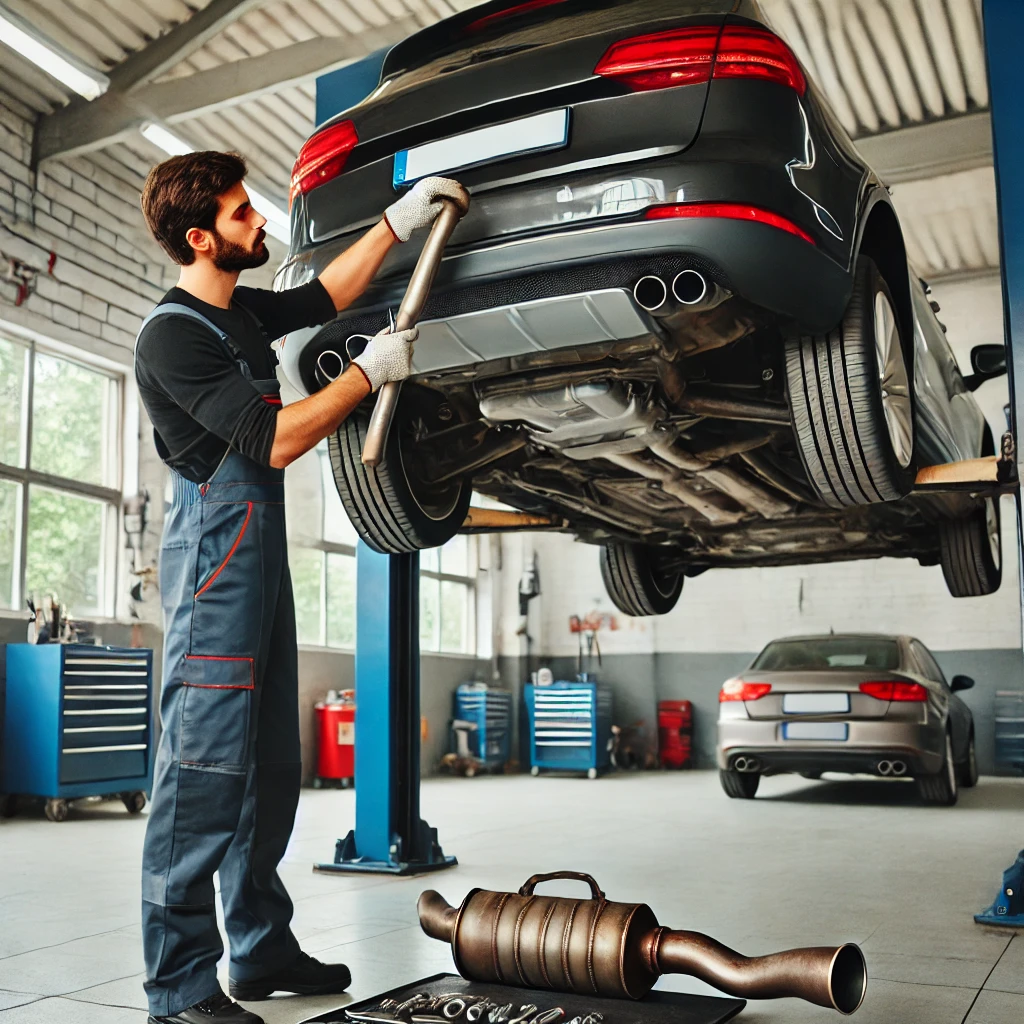The exhaust system in a vehicle plays a critical role in ensuring smooth engine operation, optimal fuel efficiency, and compliance with environmental regulations. A faulty exhaust can lead to excessive emissions, increased fuel consumption, and loud noises, making it crucial to replace worn-out components at the right time.
Understanding the Function of the Exhaust System
Your car’s exhaust system serves multiple important functions:
- Directing Exhaust Gases Safely Away – The system channels harmful gases such as carbon monoxide (CO), nitrogen oxides (NOx), and hydrocarbons (HC) from the engine to the rear of the vehicle.
- Reducing Noise Levels – The muffler absorbs sound waves, preventing the engine from being excessively loud.
- Enhancing Fuel Efficiency – A healthy exhaust system prevents engine strain, optimizing fuel economy.
- Controlling Emissions – The catalytic converter helps transform toxic gases into less harmful emissions.
If any of these functions are compromised, your vehicle will experience performance issues and potential legal consequences due to increased emissions.
Common Signs You Need an Exhaust Replacement
Recognizing early warning signs of exhaust system failure can save you from costly repairs and breakdowns. Look out for:
🚨 Loud Noises from the Engine or Exhaust Pipe – A hole in the muffler or exhaust pipe causes excessive noise.
🚨 Decreased Fuel Efficiency – Leaks or clogs in the exhaust system force the engine to work harder.
🚨 Strong Exhaust Smell in the Cabin – Indicates a possible exhaust leak, which can expose passengers to harmful fumes.
🚨 Rust or Corrosion on the Exhaust System – Excess moisture can cause the metal components to deteriorate.
🚨 Check Engine Light Illuminated – Faulty oxygen sensors or emissions-related problems may trigger the light.
Step-by-Step Exhaust Replacement Process
Replacing an exhaust system requires precision and expertise to ensure proper installation. Here’s how professionals do it:
1️⃣ Inspection & Diagnosis – A mechanic examines the exhaust system for leaks, cracks, and damaged components.
2️⃣ Removing Old Exhaust Parts – Corroded sections, including the muffler, catalytic converter, and pipes, are carefully detached.
3️⃣ Installing the New Exhaust System – The replacement parts are fitted according to the vehicle’s specifications.
4️⃣ Sealing and Securing Components – New gaskets, clamps, and seals are used to prevent future leaks.
5️⃣ Testing & Final Adjustments – The car is started, and the exhaust flow is checked to ensure everything functions properly.
Replacing a damaged exhaust system prevents excessive emissions, improves fuel economy, and ensures compliance with road safety laws.

